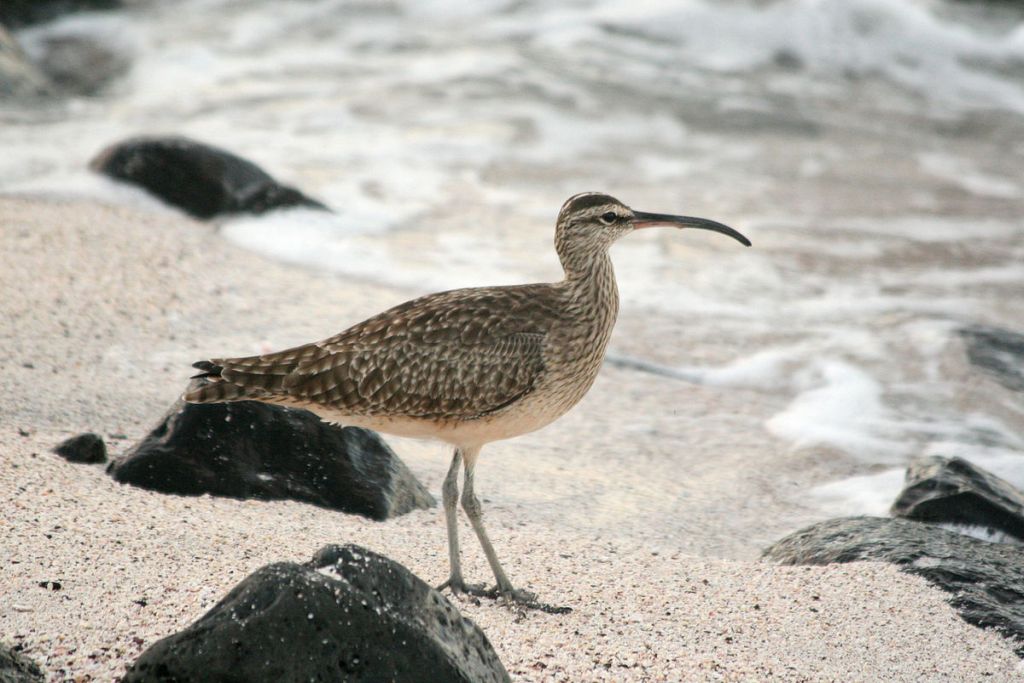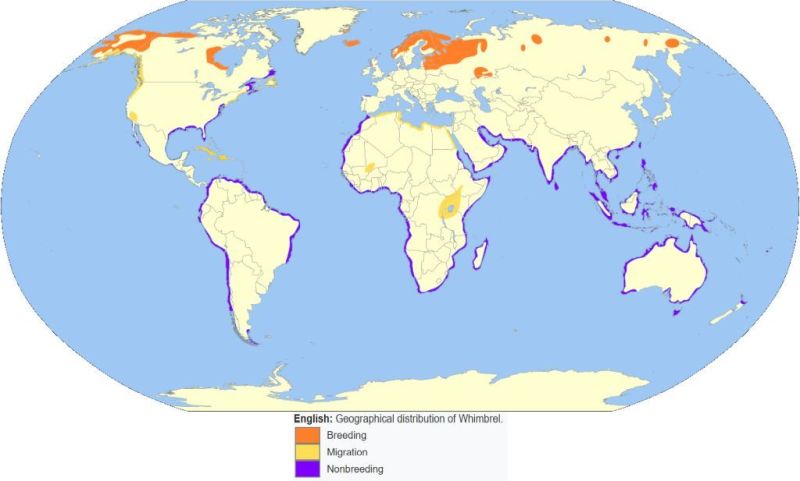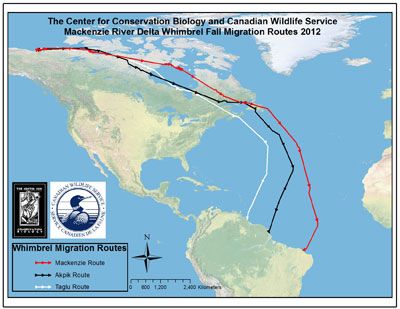
Every fall this bird performs an amazing feat of physical endurance. It flies non-stop over the ocean for 2,500 miles.
The whimbrel (Numenius phaeopus) is a long distance migrant that occurs on every continent except Antarctica because it breeds in the far north and winters in the southern hemisphere.

Most North American whimbrels spend the winter in coastal South America. To get there, some travel the western route down the Pacific Ocean to Columbia, Ecuador, Peru and Chile.
Others take an eastern route, flying across northern Canada in mid-July to spend two weeks fattening up on the shores of the U.S. and Canada. Then they launch over the Atlantic and fly non-stop to Venezuela, the Guianas and Brazil. What’s the air distance from Cape Cod to Venezuela? 2,500 miles.
We didn’t know the whimbrels’ route until the Center for Conservation Biology began satellite tagging them in 2008. In August 2012 they made an astonishing discovery. Three of their 20 satellite tagged whimbrels made a wide arc over the Atlantic, far out to sea, before heading for the coast of Brazil. One of them (red line) traveled 4,355 miles non-stop before touching down. At 30 miles per hour, the trip took six days. Read more at the Center for Conservation Biology website.

By now whimbrels have been on the move for several weeks. When you see one you’ll know why he’s eating so much. He has a big trip ahead of him.
UPDATE, 25 September 2019: Here’s news of an amazing whimbrel journey this fall — non-stop for 5,000 miles!
Katakturuk, a Whimbrel tagged in the #ArcticNationalWildlifeRefuge this summer, has completed a 7000 mile migration from the foothills of the Brooks Range to the North coast of Brazil. The last 5000 miles was completed in a single non-stop 5-day flight. #arcticbirdfest pic.twitter.com/SgACzWNxhR
— Shiloh Schulte (@ShilohSchulte) September 24, 2019
(photo and map of the whimbrel’s range from Wikimedia Commons. Migration routes map from Center for Conservation Biology. Tweet from Shiloh Schulte. Click on the captions to see the originals.)
Mind. Blown. WOW